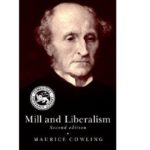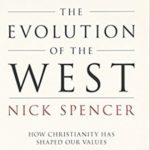The West is less Christian than it used to be. “A growing number of Western individuals greet the milestones of life with no religious framework at all,” Mary Eberstadt writes in her new book, How the West Really Lost God. They are born without being baptized or dedicated to a Christian community; they attend Sunday brunch rather than Sunday service; “and upon dying their bodies are incinerated and scattered to the winds, rather than prayed over whole in the ground as Christian ritual and dogma had hitherto commanded.”
In her thoughtful and engaging book, Eberstadt offers a new explanation for the religious downturn. Nietzsche’s madman predicted that religion would inevitably fade away. The traditional narratives about secularization see world-historical events or broad intellectual movements as silver bullets killing God. But Eberstadt encourages us to take another look at home and hearth—especially broken ones.
By looking at the decline of the natural family, she argues, we can understand how the West really lost God. While the religious and irreligious alike will find this book enlightening, the key audience includes the small “o” orthodox believers eager to spread the gospel. Once this audience understands the relationship between faith and family, perhaps Western society can find God again.
The Family Factor
Start your day with Public Discourse
Sign up and get our daily essays sent straight to your inbox.To start, Eberstadt reviews the conventional theories of religious decline and reveals how they are incomplete. Most theories point to either an intellectual movement or a world historical event to explain the decline of religion. For instance, some blame rationalism and the Enlightenment for crowding out God. Others accuse consumerism. Sometimes, we are told that secularization results once people realize they no longer need the imaginary comforts of religion, or that the catastrophic world wars caused men and women to lose their faith. Many of these theories have a kernel of truth, but Eberstadt argues convincingly that none is sufficient to explain the whole picture because none can explain the ebb and flow in religious belief. They cannot answer why Christianity “has flourished in some times and places and declined in others.”
Enter what Eberstadt calls the “Family Factor”: the “active effect that participation in the family itself appears to have on religious belief and practice.” By the family, Eberstadt means the natural family: a married mother and father raising their biological children. The Family Factor explains why secularization occurs and fills in the gaps that other theories leave behind.
Family life is not an outcome of belief but a conduit to religious faith. Eberstadt compares learning religion to learning a language. She argues that “trying to believe without a community of believers is like trying to work out a language for oneself.” Eberstadt’s theory explains the communal way in which individuals “think and behave about things religious—not one by one and all on their own, but rather mediated through the elemental connections of husband, wife, child, aunt, great-grandfather and the rest.”
Her theory is unique. Most secularization narratives ignore the family’s role in religious formation or see familial decline as a result of secularization: people stopped believing in God and then they stopped having families. But Eberstadt turns this simple, direct relationship on its head. The connection between faith and family is multidimensional: “faith and family are the invisible double helix of society—two spirals that when linked to one another can effectively reproduce, but whose strength and momentum depend on one another.”
It’s no secret that churches provide a necessary infrastructure and larger community for raising children. But Eberstadt conjectures that something deeper drives families to the pews. “Something about children might make parents more inclined toward belief in the infinite—to a supernatural realm that is somehow higher and less well-understood than this one.”
Childbirth is the miracle of life, and parents experience it, in Eberstadt’s words, as a “moment of communion with something larger than oneself, larger even than oneself and the infant.” This may explain why seemingly banal activities of family life—caring for an ailing parent or just staying married for seventy years—seem almost supernatural. The family, in a sense, defies death. Individual members may perish, but genes, names, and memories live on.
Eberstadt shows that strong family formation means more God. America enjoys a higher degree of religiosity than European countries, because “there are more families following the traditional model in America, even today, than in Europe.” Indeed, the post-war American baby boom coincided with a religious boom.
Conversely, weak family formation (e.g., illegitimacy, cohabitation, and divorce) means less God. The countries that have experienced religious decline have seen the natural family at its weakest. The French lost God earlier than other Western nations, because they stopped having babies and forming families in the late eighteenth century. Scandinavia, an area that has experienced dramatic decline in religious belief, has a high divorce rate and late marriage, and although there is a high rate of out-of-wedlock births, the total birth rate is very low. Countries that stop marrying and giving birth also stop attending church.
Lost in Translation
As Eberstadt reminds her readers, the language of Christianity is familial. Christians greet one another as brothers and sisters of the same God the Father. Christian marriage symbolizes the union of Christ and the church. The Holy Trinity is described in terms of a familial relationship: God the Father, God the Son, and God the Holy Spirit. The Incarnation—the seminal event in Christian redemption—relies on the human family: God the Son came to earth as an infant, born to Mary, and adopted by Joseph.
Without the family, the Christian story may be lost in translation. If one is raised without a father, how can one contemplate the unconditional love of God the Father or understand Joseph’s adoption of Jesus? If children are a choice, how can a person consider accepting them, as Mary did, as a matter of obedience to God?
And if unencumbered self-expression is the highest virtue, then Christianity’s teachings on sex, money, and vocation are vicious. Sadly, says Eberstadt, “when many people live lives that contradict the traditional Christian moral code, the mere existence of that code becomes a lightning rod for criticism and vituperation—which further drives people away from the church.” Eberstadt concludes that “family illiteracy breeds religious illiteracy.”
Protestantism, Catholicism, and Family Decay
If family decay leads to and accelerates religious decline, then how should churches respond?
In a chapter aptly titled “Assisted Religious Suicide,” Eberstadt focuses most on how churches harmed the family by embracing certain doctrinal changes to the Christian moral code. This chapter is essential reading for any Christian believer, whether Protestant or Catholic. Yet it also reveals the weak point in Eberstadt’s analysis: she fails to distinguish between thriving and decaying churches in Protestantism and why, despite keeping key doctrines on family formation, Catholicism is declining.
Eberstadt argues that the Christian moral code remained intact until the Protestant Reformation, “when churchmen started picking apart the tapestry of Christian sexual morality—hundreds of years ago, long before the sexual revolution, and over one particular thread: divorce.” Now, several hundred years later, “divorce in the mainline Protestant churches is not only destigmatized, it has been almost entirely emptied of moral content, period.”
(Eberstadt does not explain the difference between an annulment, which seems not to damage the institution of marriage, and divorce, which in her view does undermine marriage.)
The doctrinal changes on divorce, Eberstadt argues, were a “template for other related doctrinal changes to come”: first divorce, then contraception, and finally homosexuality. Reformers throughout the ages intended these changes to “construct a Christianity with a kinder, gentler, more inclusive face” and thereby expand the flock, but instead, Eberstadt argues, they decimated the family and church attendance.
Her point is well-taken—changes in doctrine on marriage and sexuality have undermined the family—but I question the accuracy of her critique of Protestantism, particularly of its beginnings. At various points, she comes close to reducing the Protestant Reformation to a revolution about divorce and sex, rather than a disagreement about the authority of the pope, the status of scripture, and the nature of grace.
Eberstadt also fails to explore why there was a sizable chunk of time between the sixteenth-century Reformation and the twentieth-century Lambeth Conference that embraced contraception. Nor does she consider why the doctrinal changes on homosexuality are quite recent.
So, did the Protestant Reformation, rightly understood, lead to widespread abandonment of traditional Christian moral teachings on marriage, family, and sexuality? Or was the liberal theology that infected at least some Protestant churches 300 years later responsible? It is hardly fair to lump Cranmer in with Schleiermacher (Henry VIII notwithstanding), much less Luther and Calvin with the father of liberal theology.
In earlier chapters, Eberstadt distinguishes between mainline Protestants (e.g., Presbyterians, Episcopalians, and Lutherans) and the pentecostal and evangelical Protestants. She acknowledges that “certain evangelical denominations are thriving despite the secular trend.” And she recognizes that the same thriving churches “do not have theological injunctions against birth control as such, and have a higher fertility rate than secular people.” If doctrines of family decay were part and parcel of the Protestant Reformation, one would expect all Protestant churches to suffer the same fate. And how would Eberstadt account for the recent doctrinal divisions between the Episcopalian and Anglican churches in America? The chapter would have benefited from considering each doctrinal change (divorce, contraception, and sexuality) and churches’ responses separately, rather than collapsing them in to one fluid phenomenon. While Catholic writers and theologically liberal mainliner connect all three doctrines, others (namely thriving, evangelical churches) do not.
Her arguments on the health of Catholicism merit a similar analysis. The Catholic Church as an institution resisted doctrinal changes on divorce, contraception, and homosexual activity: “the exception [to these doctrinal changes], of course, was the Catholic Church, whose issuance of Humane Vitae in 1968 both famously and infamously affirmed the traditional moral code by upholding the ban on birth control.”
Yet despite “sticking to its theological guns on the family,” Eberstadt writes, Catholicism has seen a “significant falloff in practice.” If keeping the doctrines was enough, why are individual Catholics, and even whole parishes, selectively following these teachings? While chiding Catholic scholars for arguing that secularization is a Protestant problem, Eberstadt readily admits that many Catholics are “Catholic” in name only: men and women who ignore not only the basic holy obligation to attend weekly mass but also the church’s teachings on sex.
Perhaps Eberstadt’s emphasis on these doctrines is misplaced. The doctrines on divorce, contraception, and homosexuality don’t seem to explain the whole story. Perhaps fidelity to the Nicene Creed keeps families in the pews.
Eberstadt writes that the “most vibrant areas of Catholicism are the most orthodox.” The same applies to Protestantism, but Eberstadt doesn’t explicitly say it.
Over the years, mainline Protestants have been eager to embrace doctrinal changes relating to family formation, but they balk at affirming the basic tenets of Christian faith. To put it another way: divorce, contraception, and homosexuality are no big deal, but the teachings of the Nicene Creed are controversial.
Thriving Protestant churches, to the contrary, take the tenets of the Nicene Creed (as well as traditional Christian moral teachings) seriously. Indeed, by so doing, many evangelical churches attract those raised devoid of religious faith. They also draw some of those “Catholics” in name only, who were baptized in the Catholic Church but didn’t believe in Christ (let alone follow the moral teachings) until becoming Protestant. (The Mormons, who embrace family formation but not the Nicene Creed, appear to be an outlier.) Eberstadt’s chapter on doctrinal changes would be stronger if she had explored these differences.
Eberstadt is both a great thinker and a devout Catholic. Protestantism has benefited from the intellectual heft of Catholicism on moral issues relating to marriage, the family, and natural law. Eberstadt, by failing to distinguish fully between thriving and decaying forms of Protestantism, misses an opportunity to engage with evangelical churches explicitly.
Still, her arguments raise challenging questions for my fellow Protestant and evangelical brethren in flourishing mega-churches. Should Protestants consider children negotiable in marriage? Should pastors be indifferent to means of procreating (or preventing it)? Do we adequately incorporate children into church life and the Christian story as Eberstadt describes it? Most importantly, how often are churches growing by attracting former Catholics, instead of training up children the way they should go? Converts are great, but so are lifelong committed Christians raised in the church.
The Fate of the Double Helix
The future of the faith-family double helix is unclear. Eberstadt recognizes that predicting the future is risky, so instead she presents both a case for pessimism—fewer people are getting married and staying married; fewer people are bearing children, let alone bearing them in wedlock; and a case for optimism—as society becomes more fragmented, the need for the family increases, so decline can lead to resurgence.
If Eberstadt is right that family decline led to religious decline, then churches need to encourage and promote family formation, and religious believers need to form families. Secularization isn’t inevitable. Christianity is still strong in the United States. Can it last another generation? The answer to this question, as all Christians must acknowledge, lies with the Holy Spirit. But Eberstadt makes a convincing case that the Holy Spirit often enlists the family.














